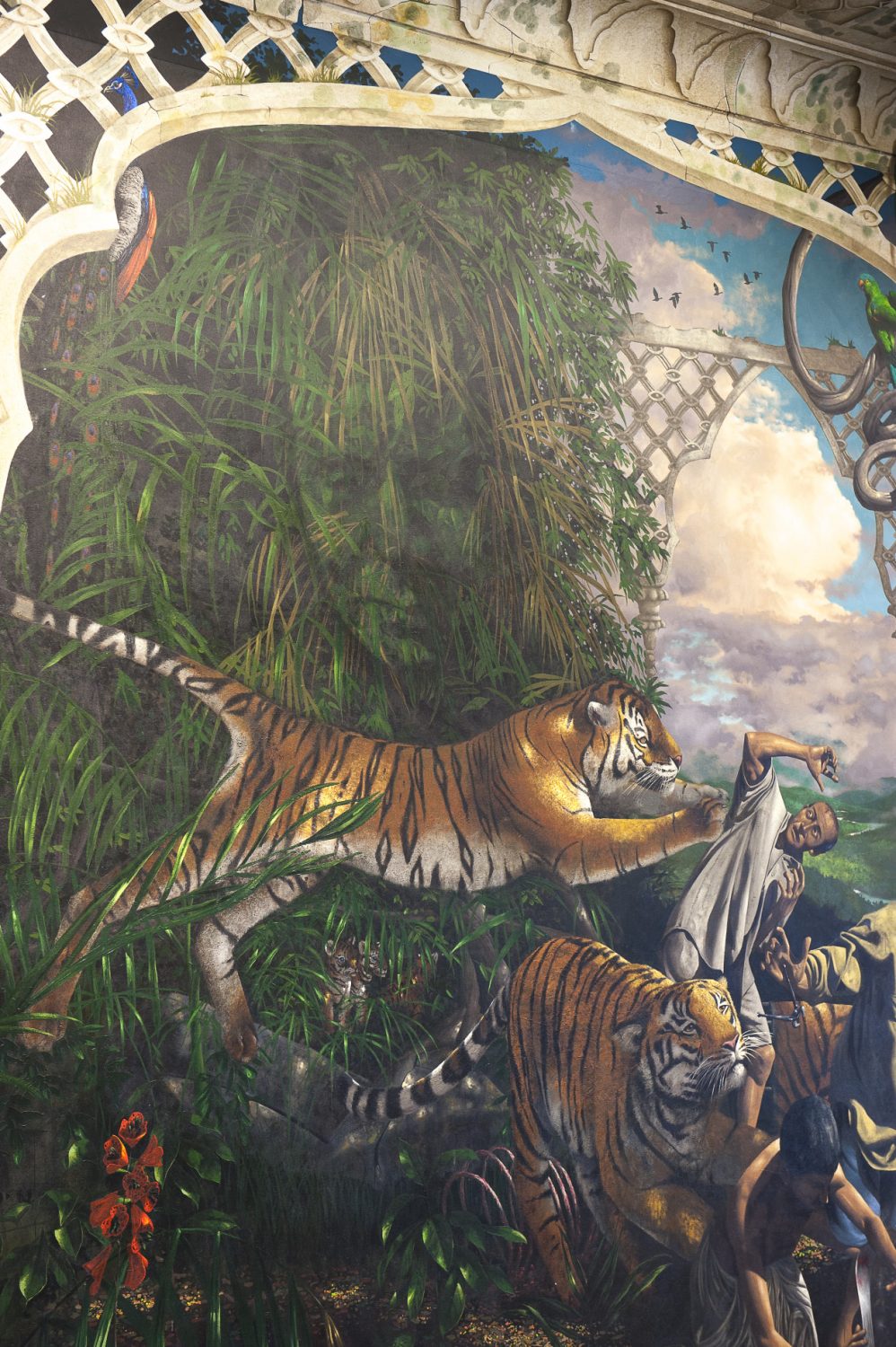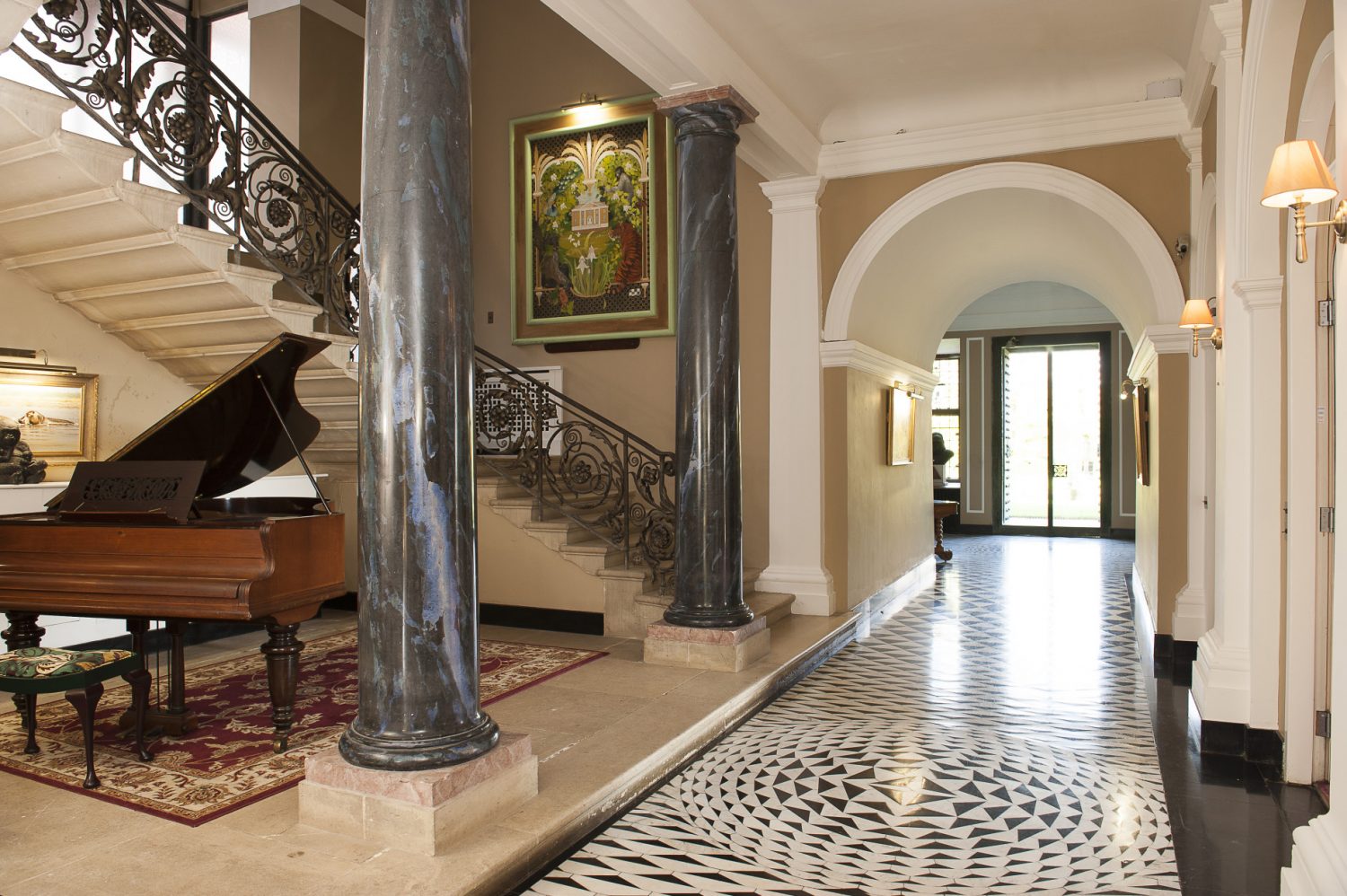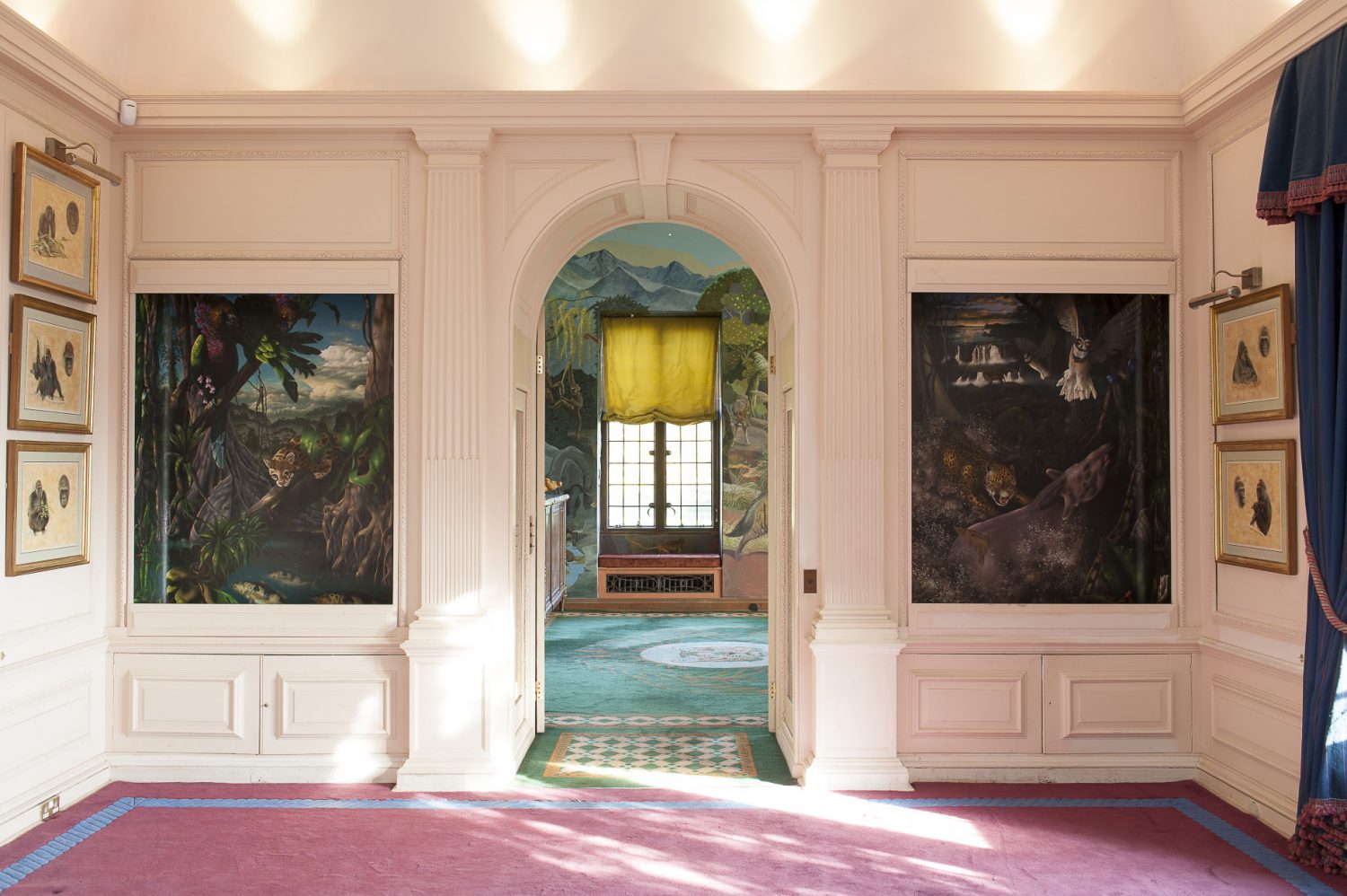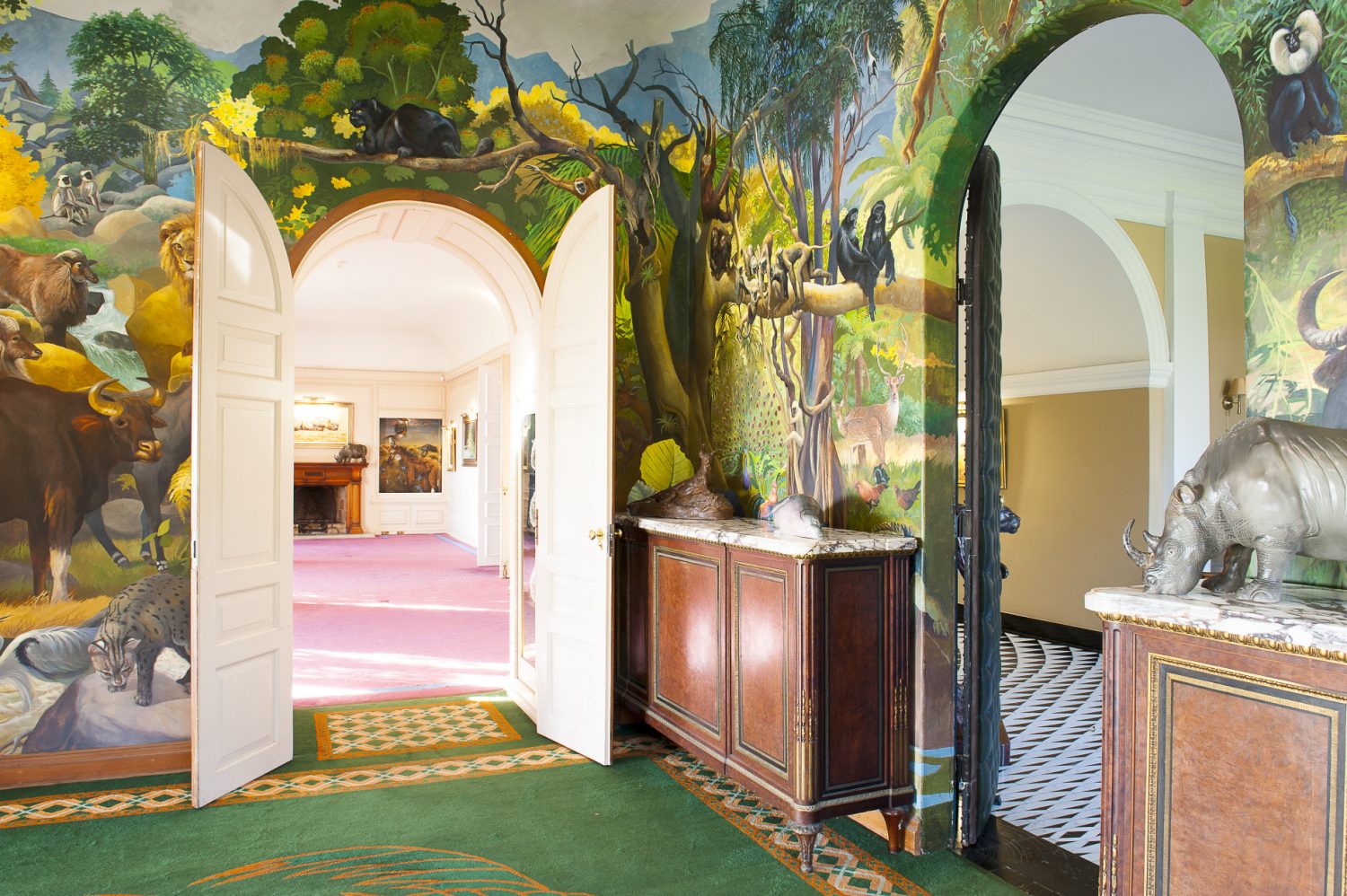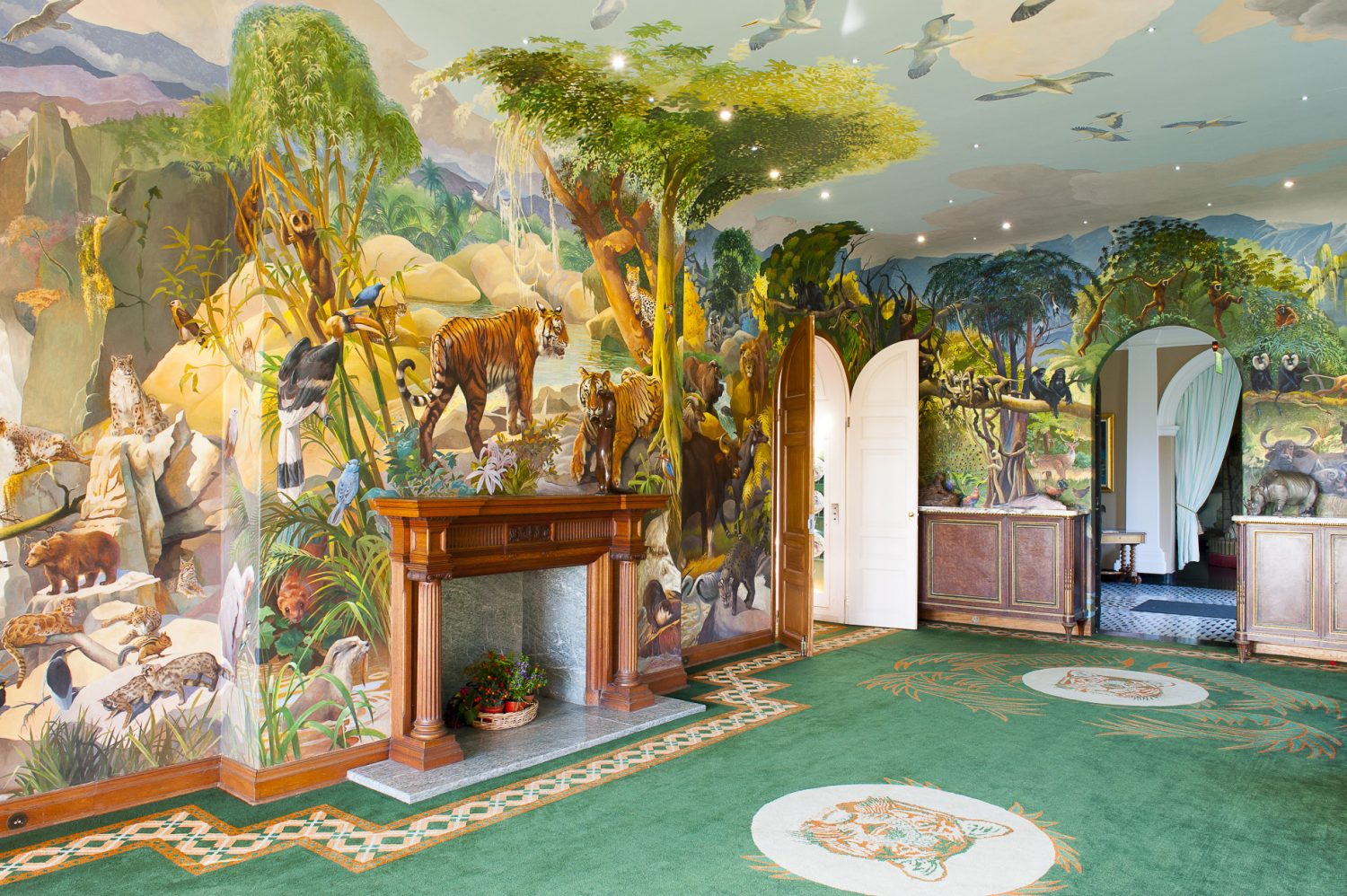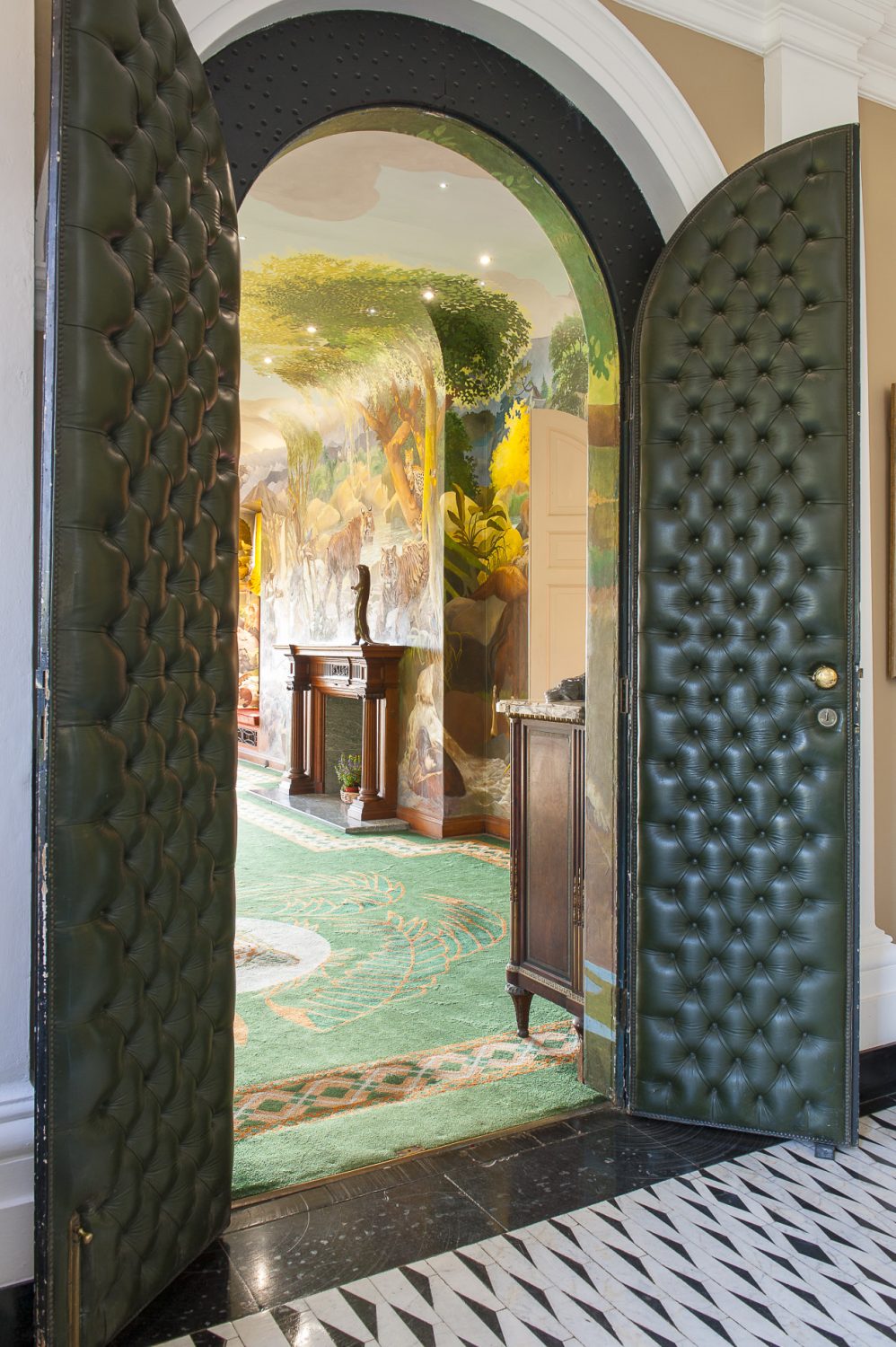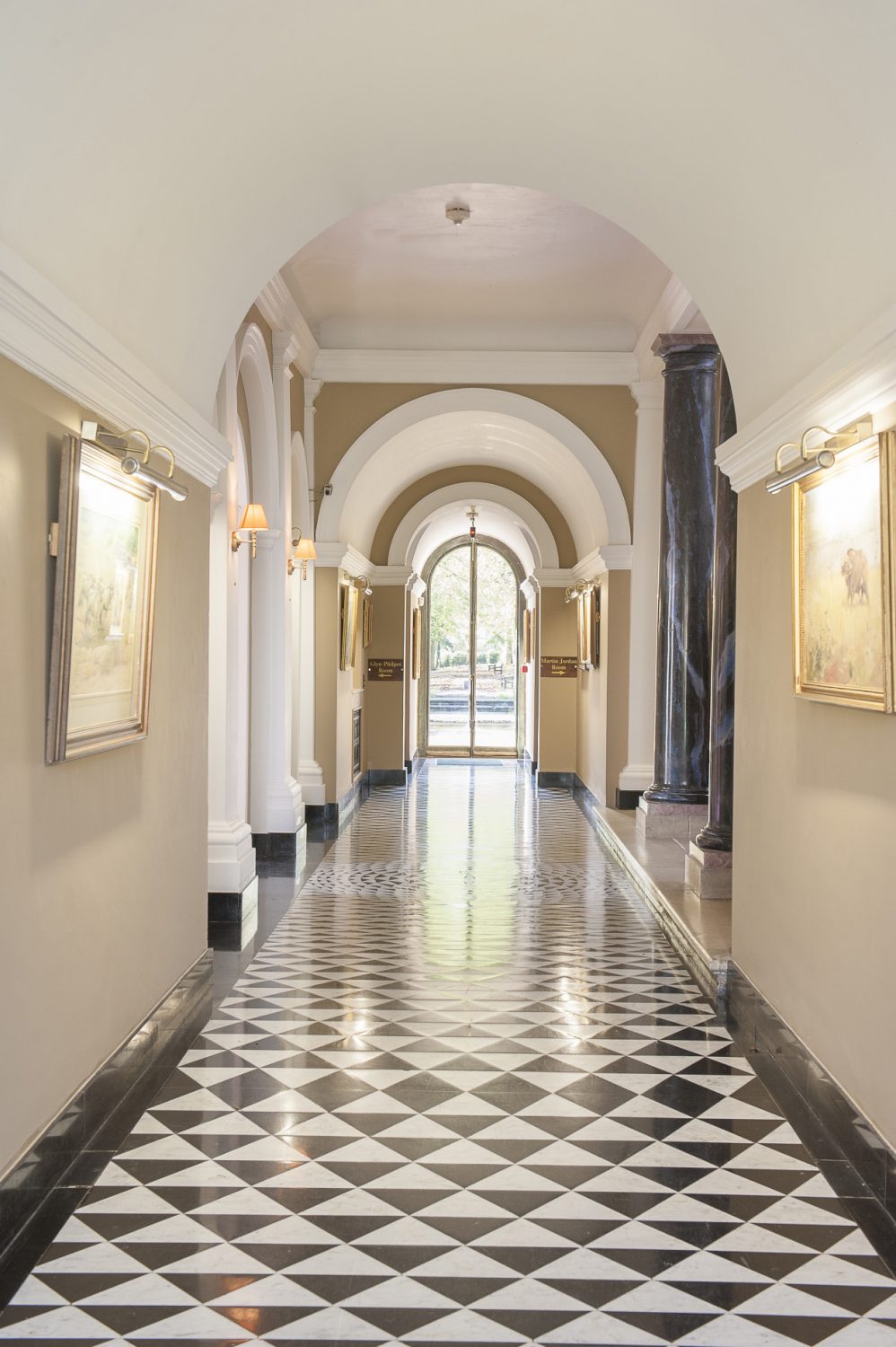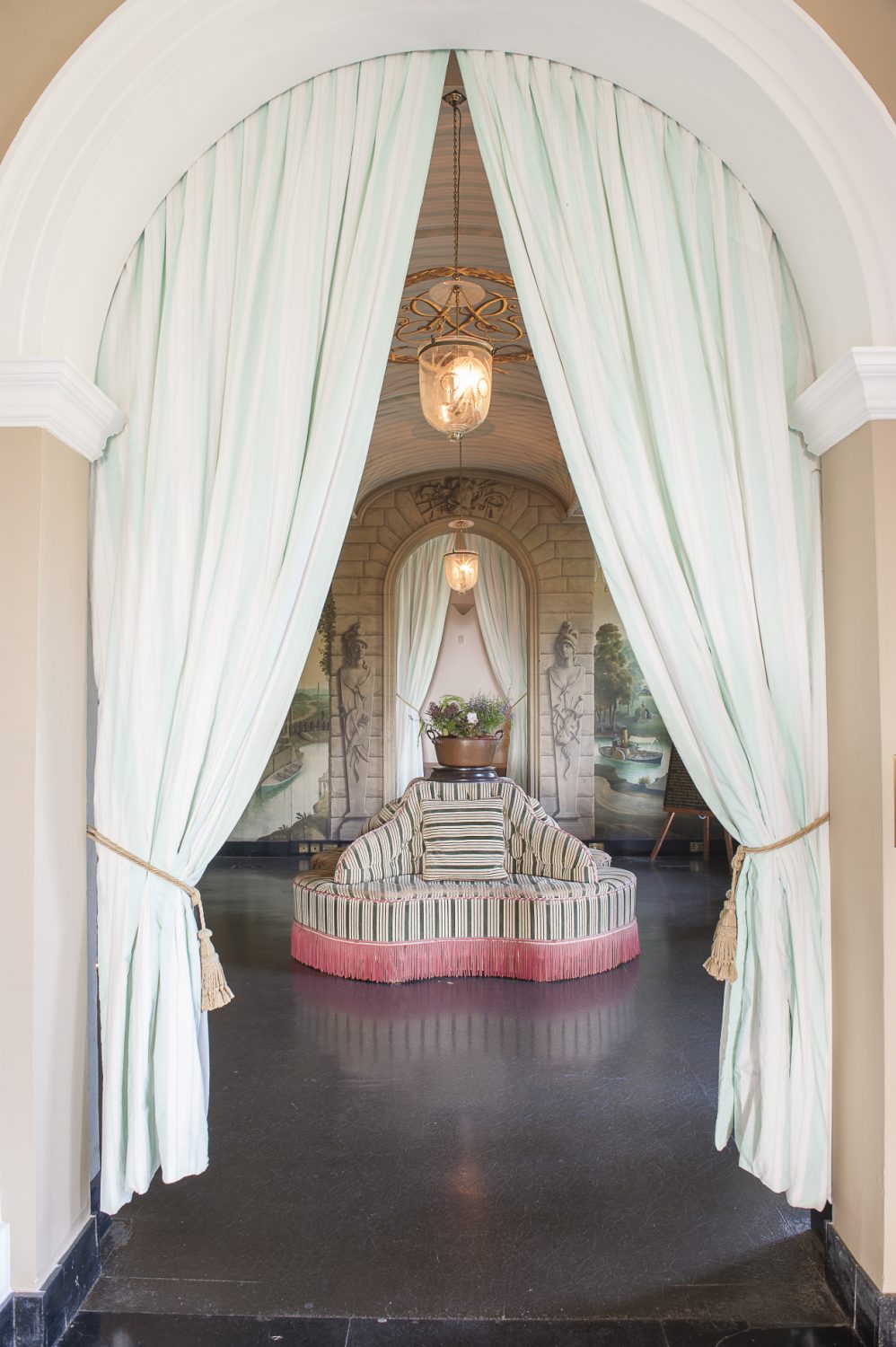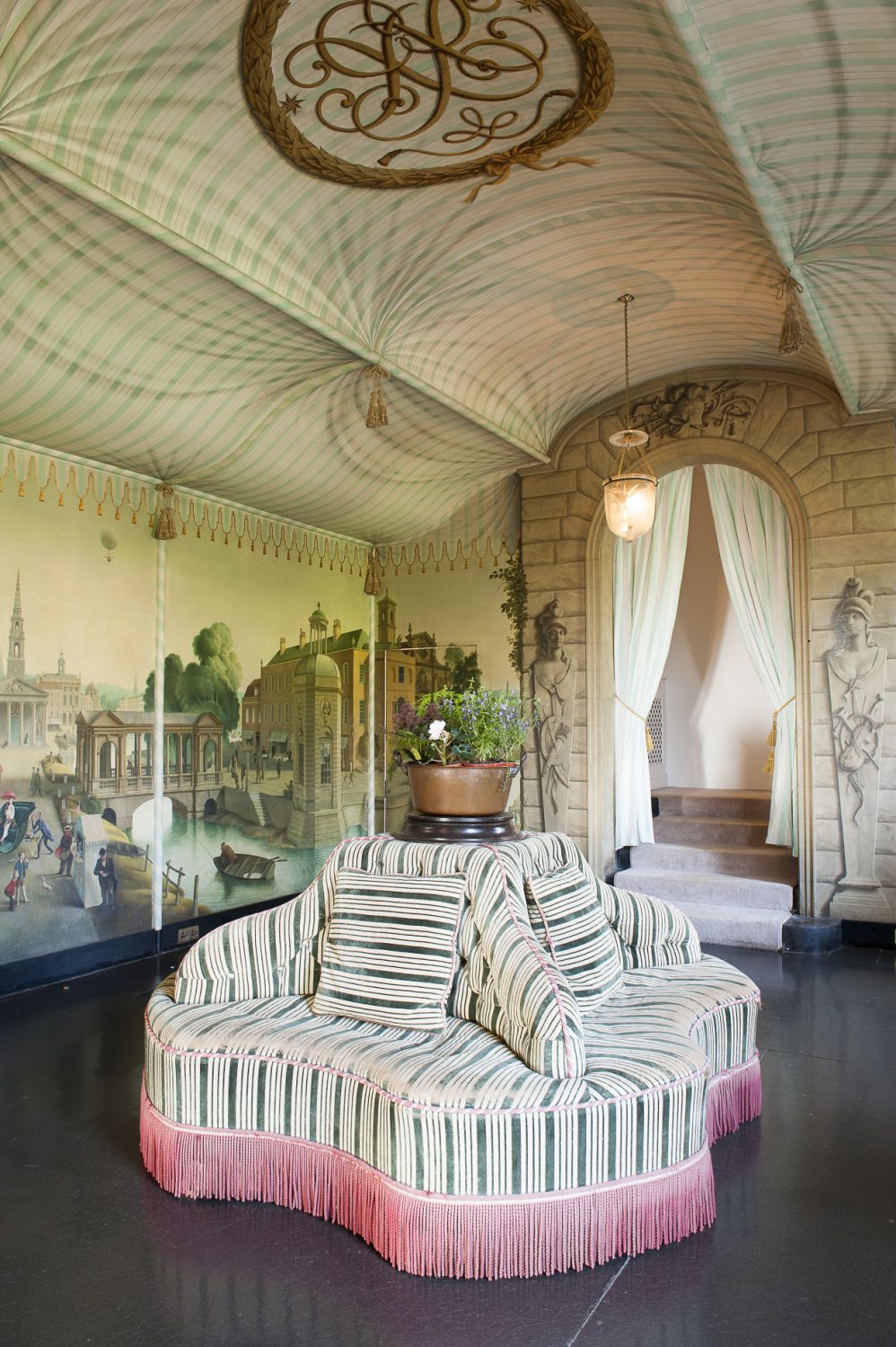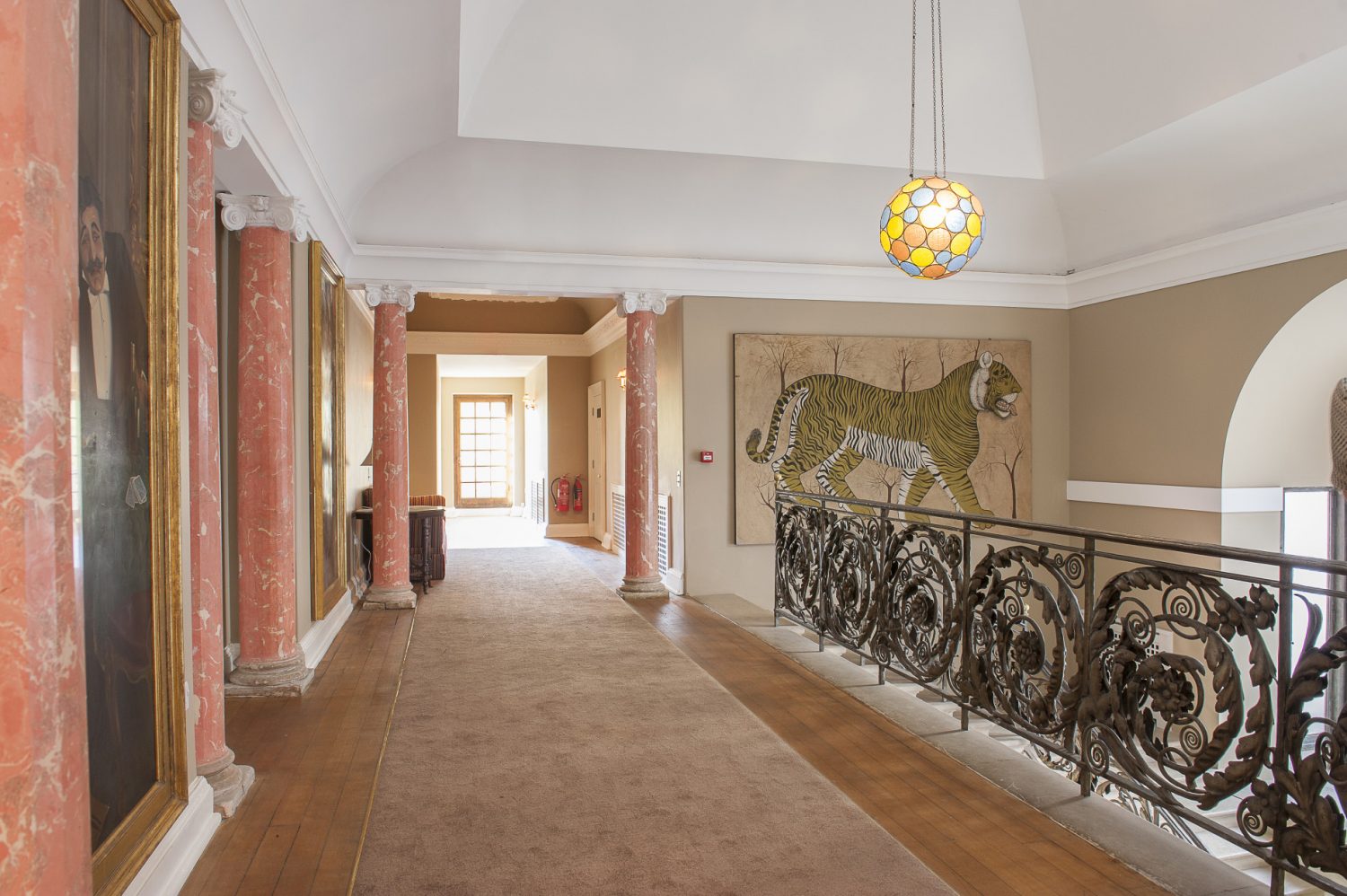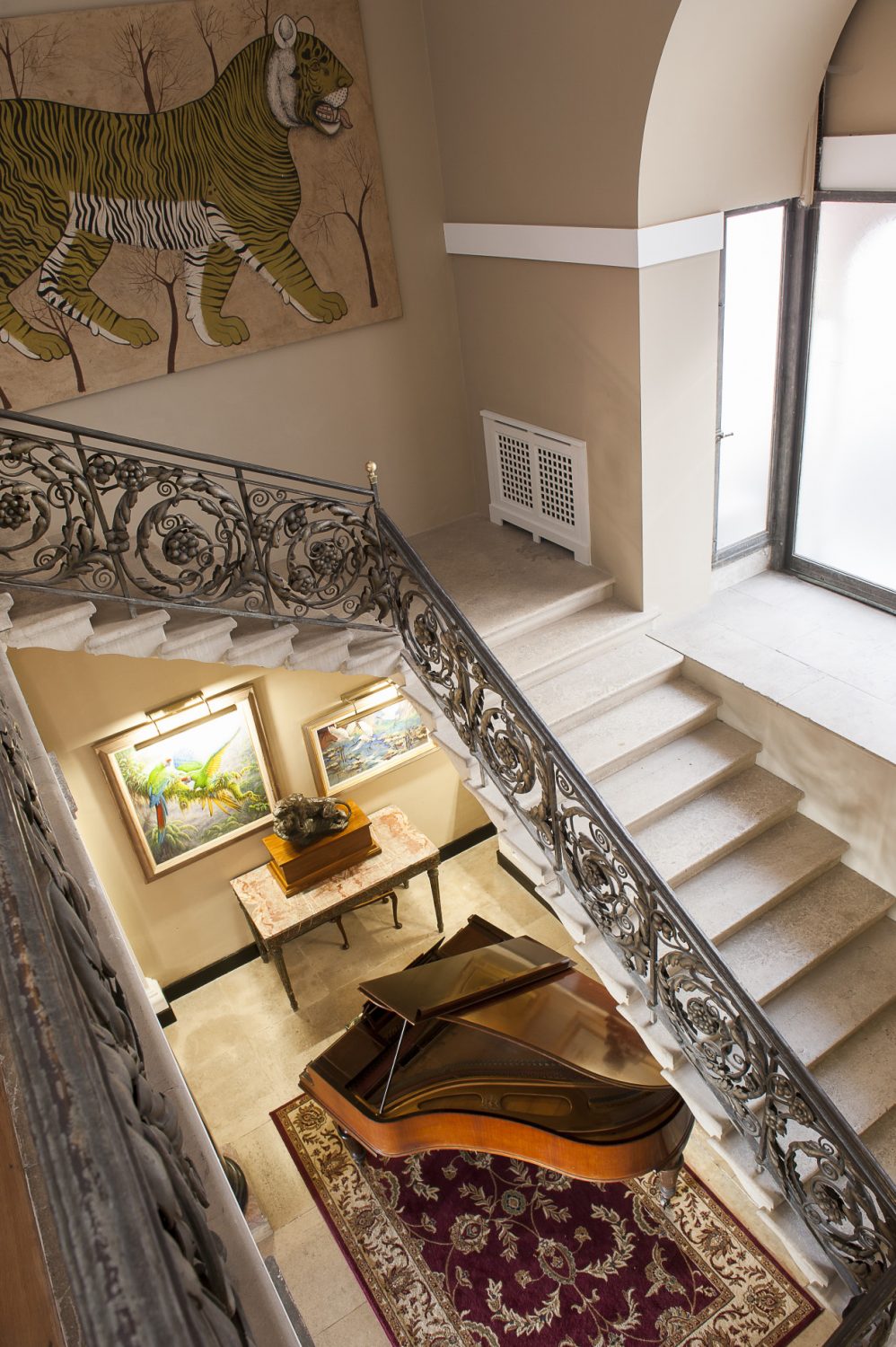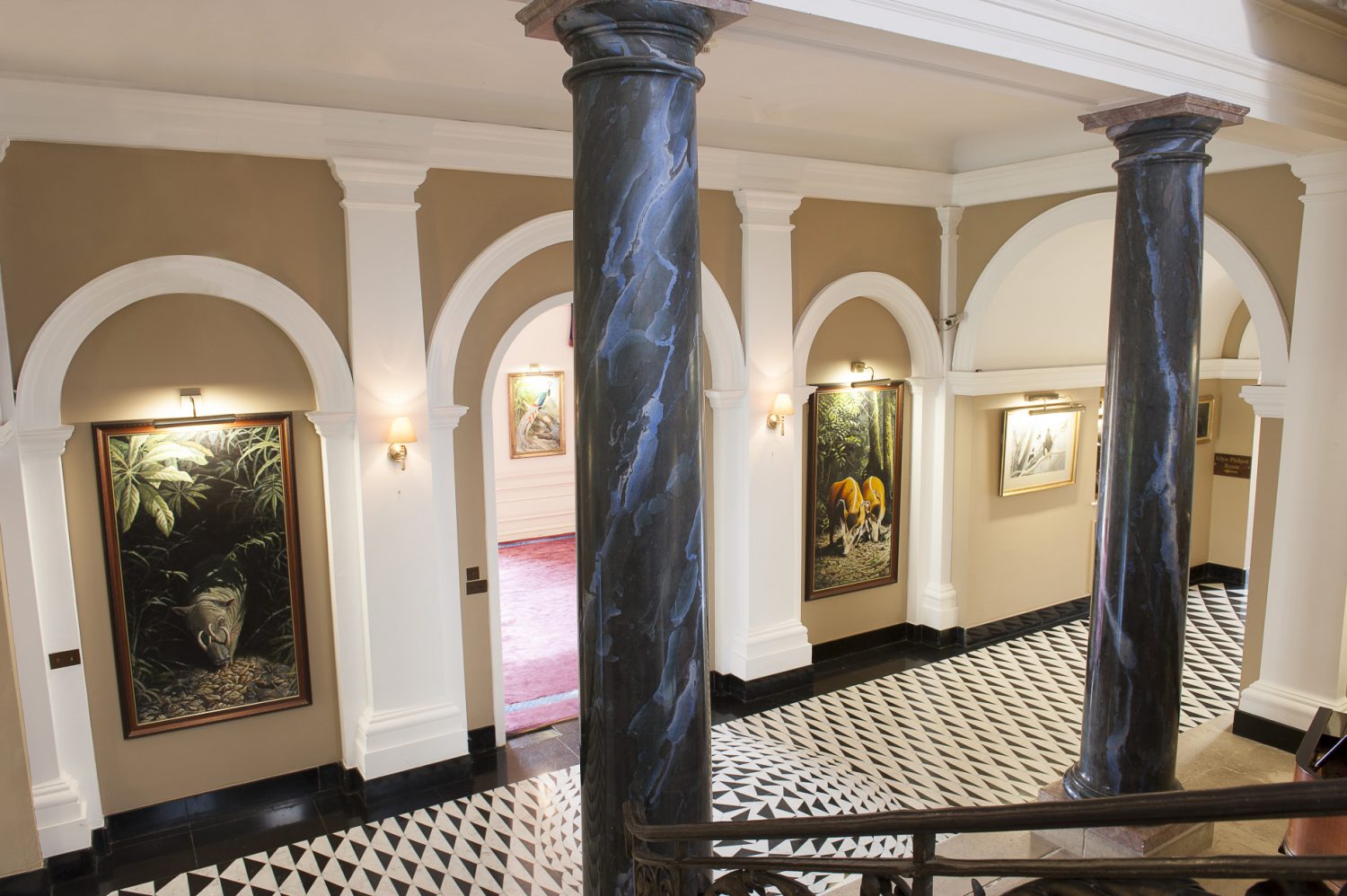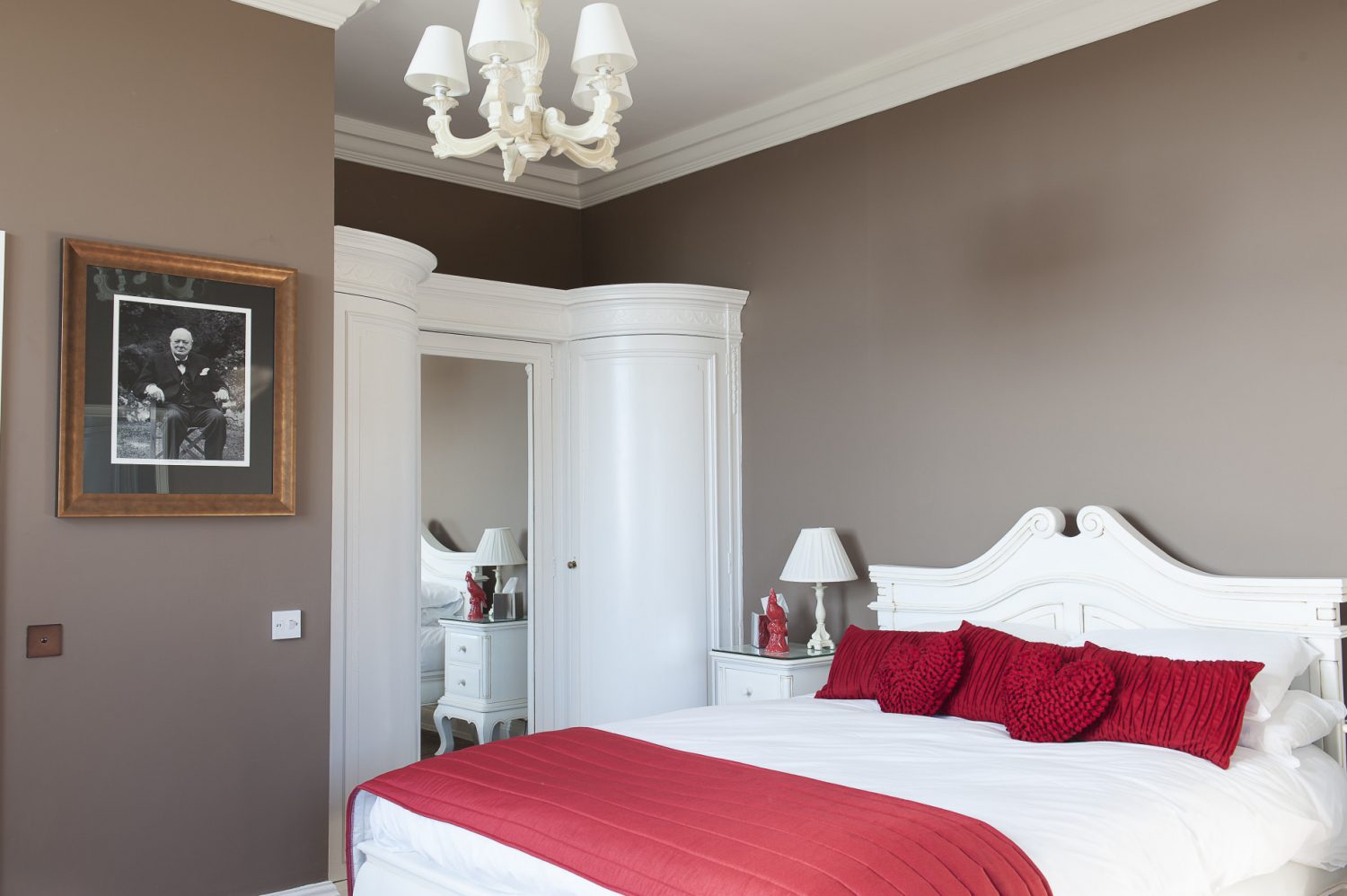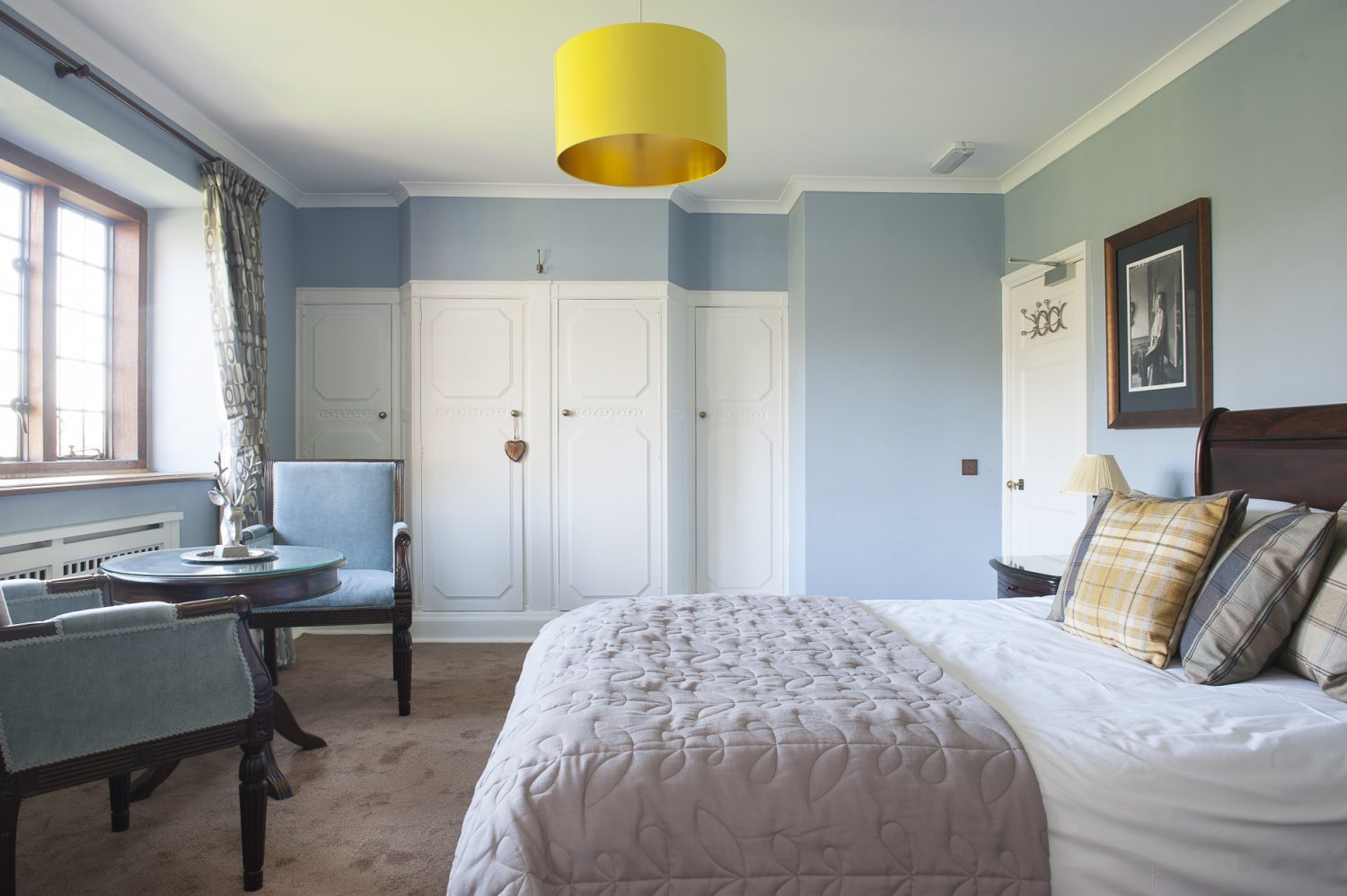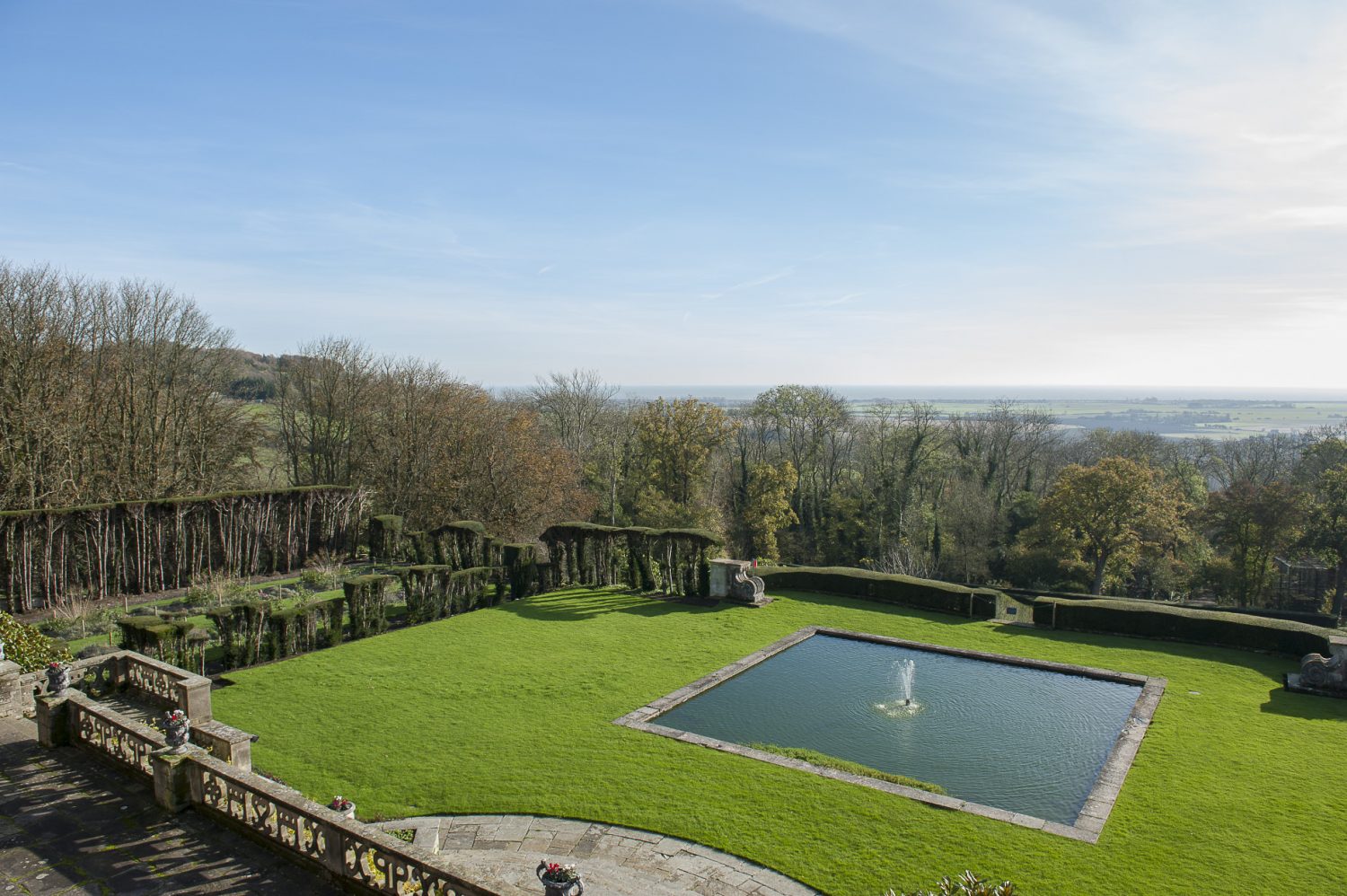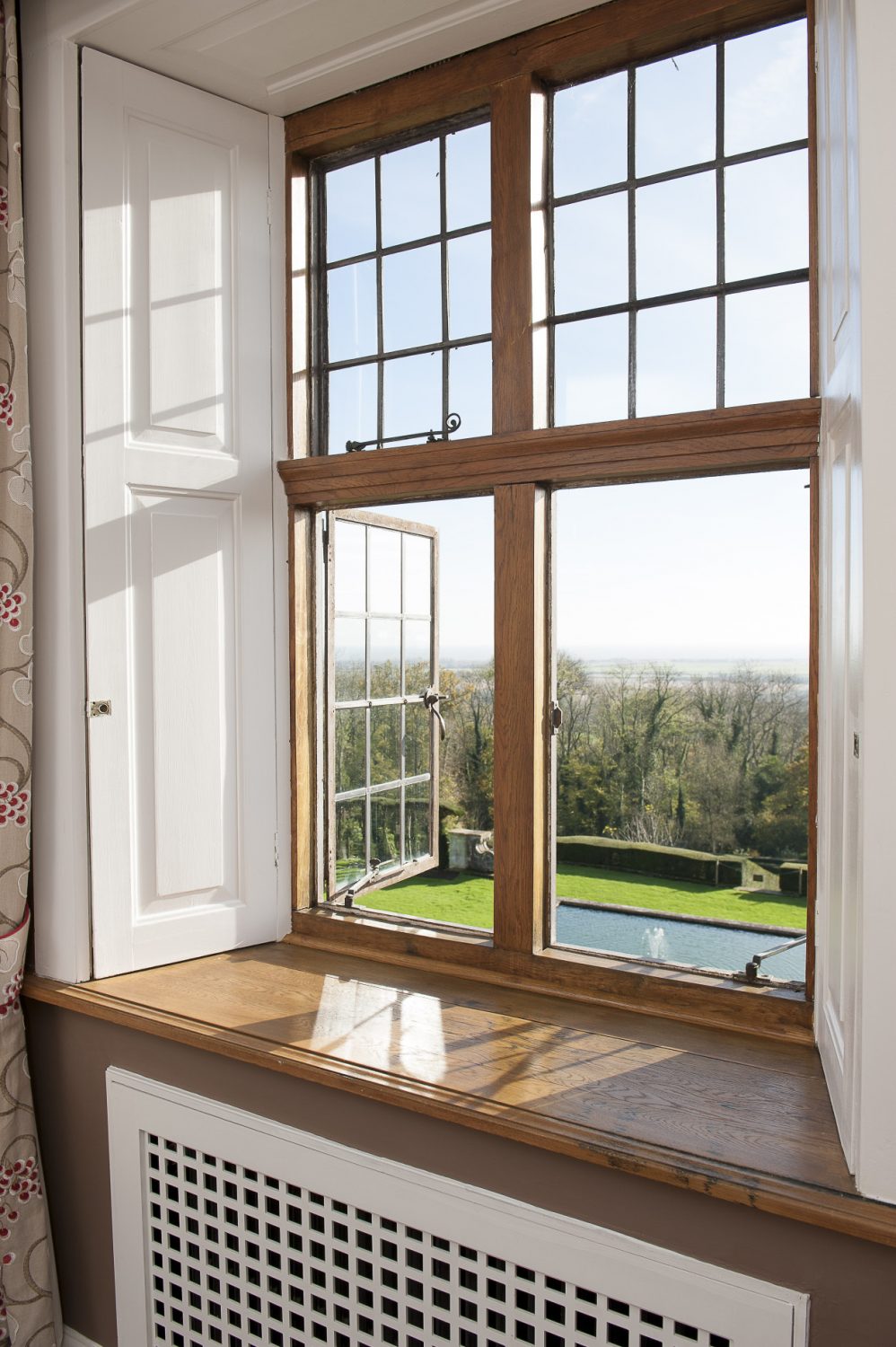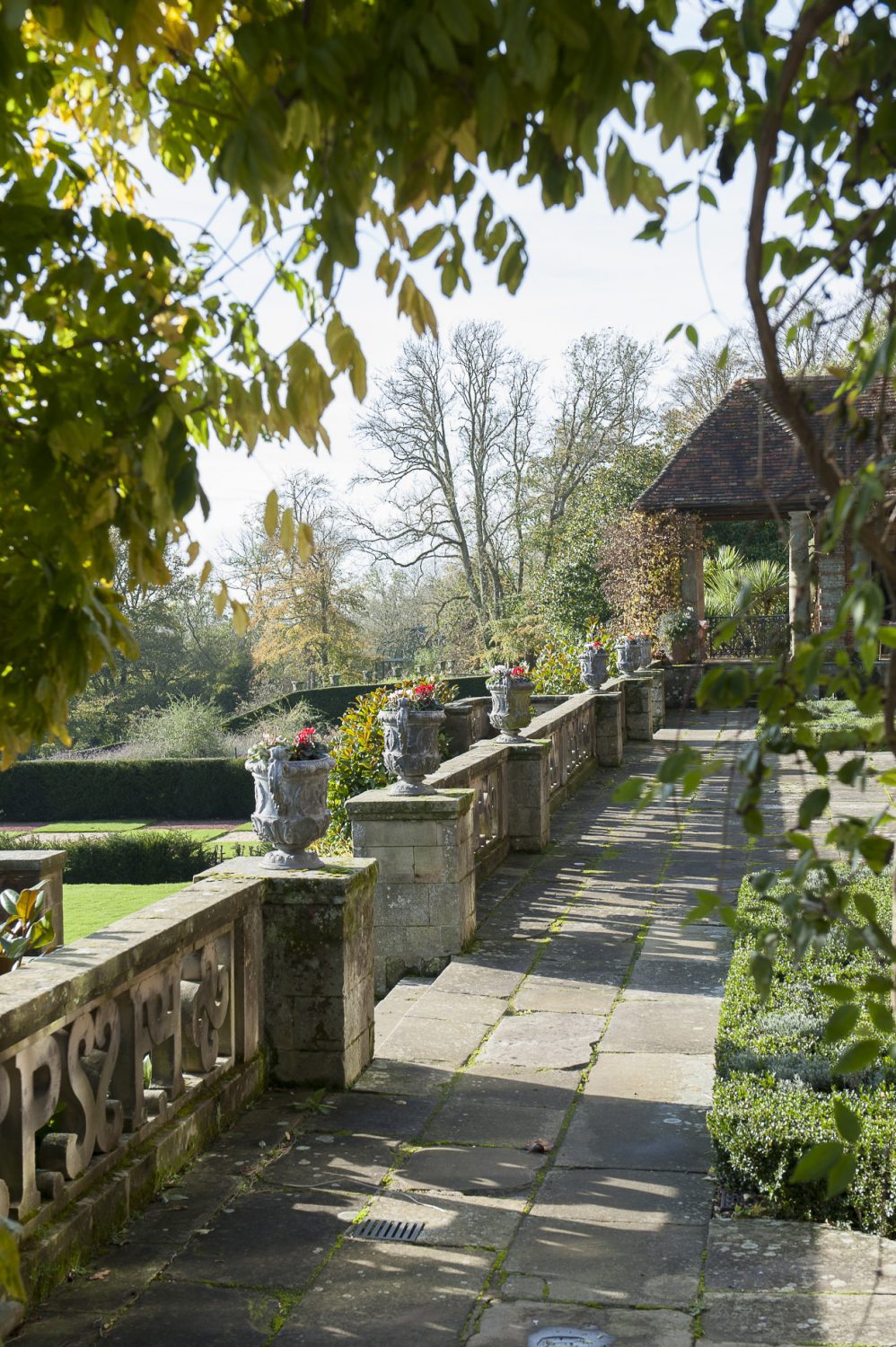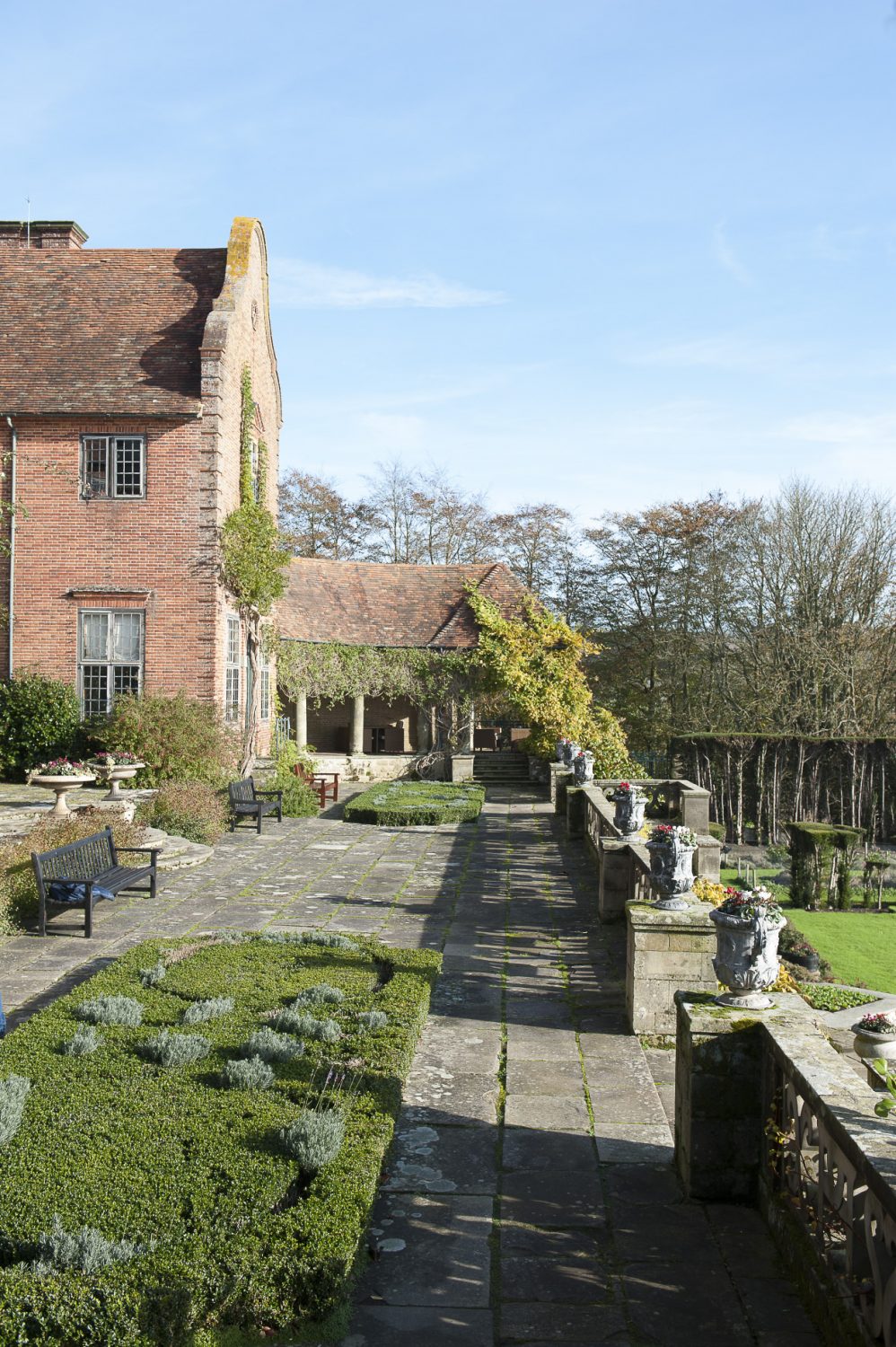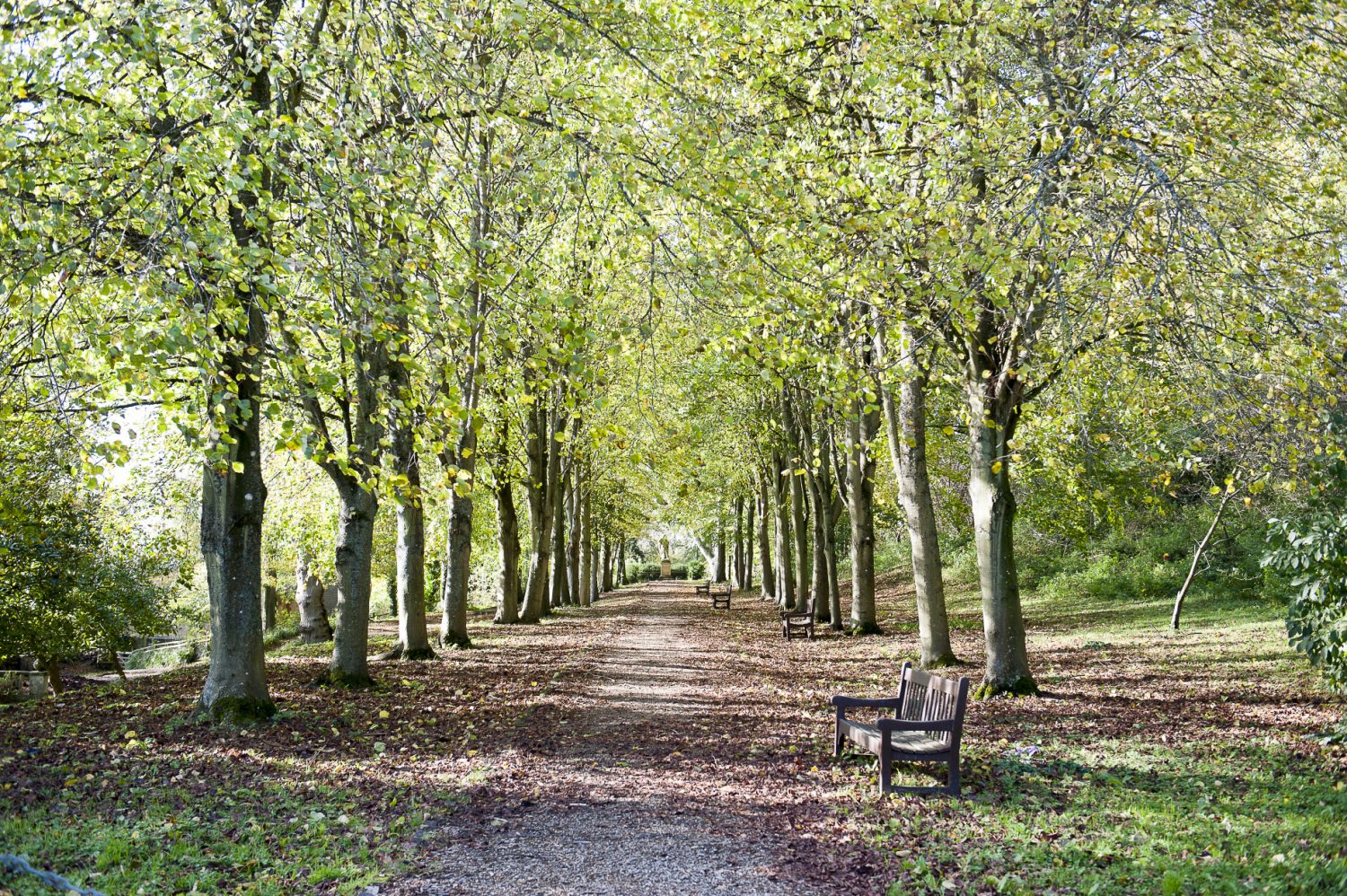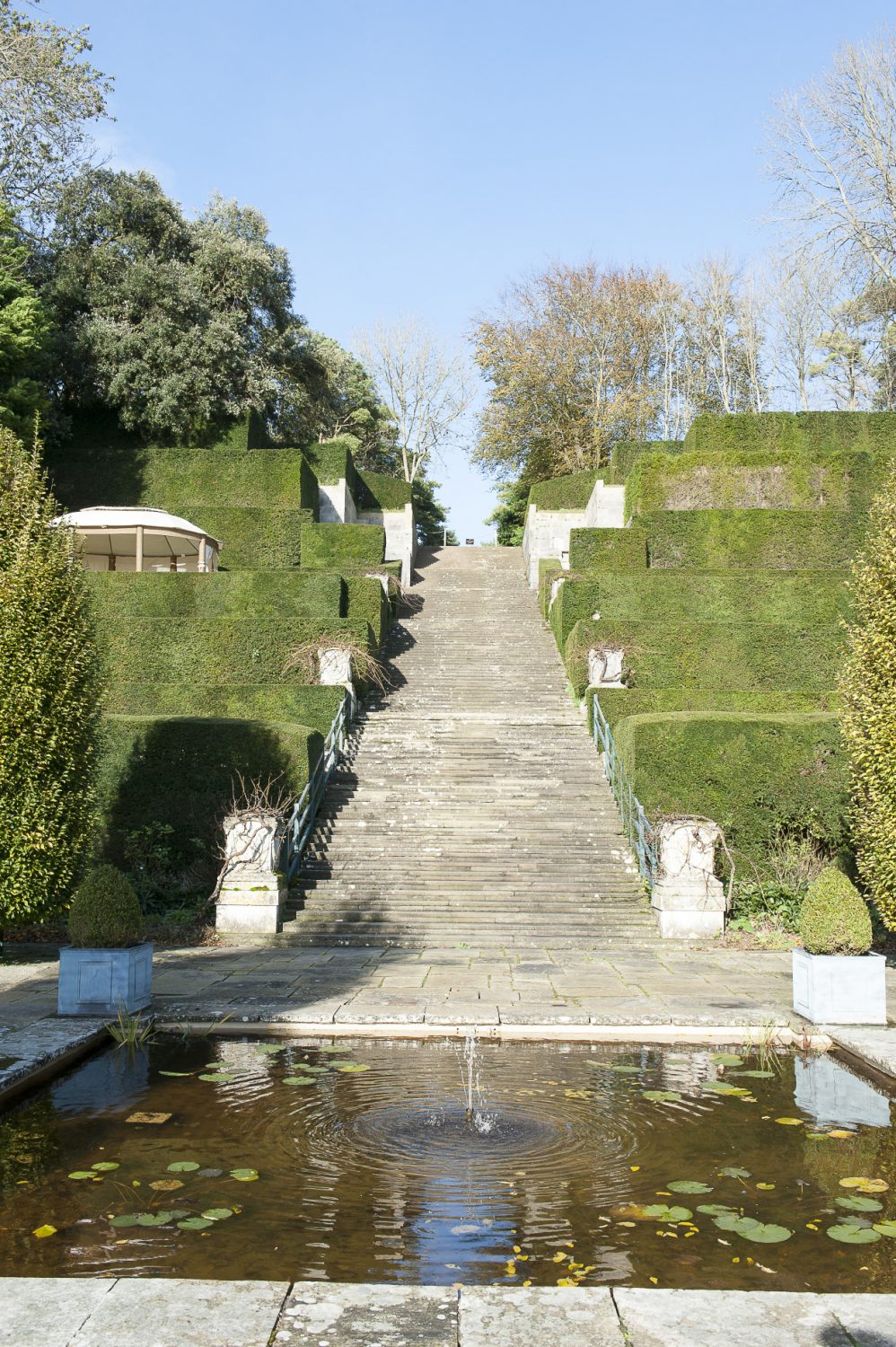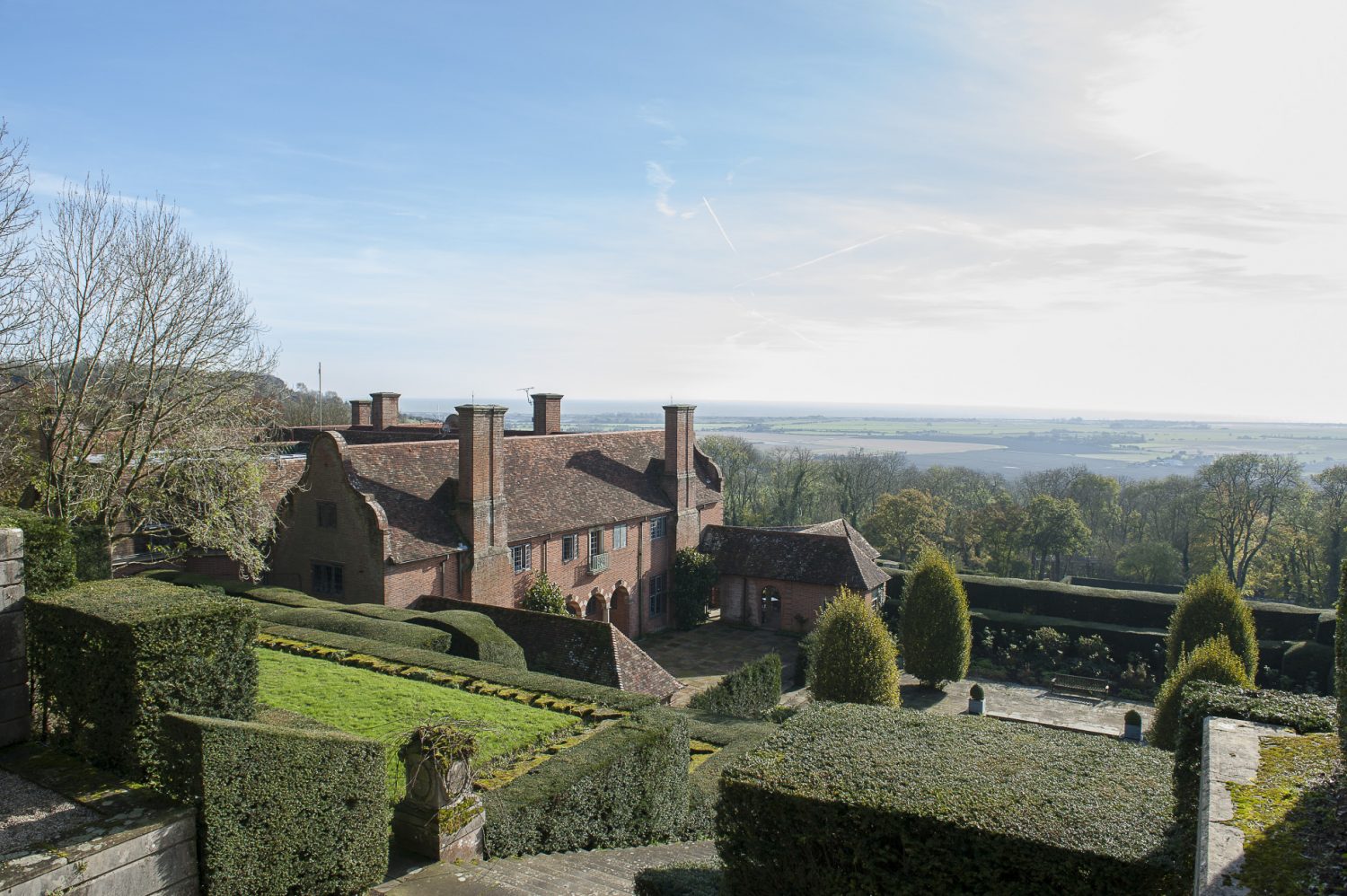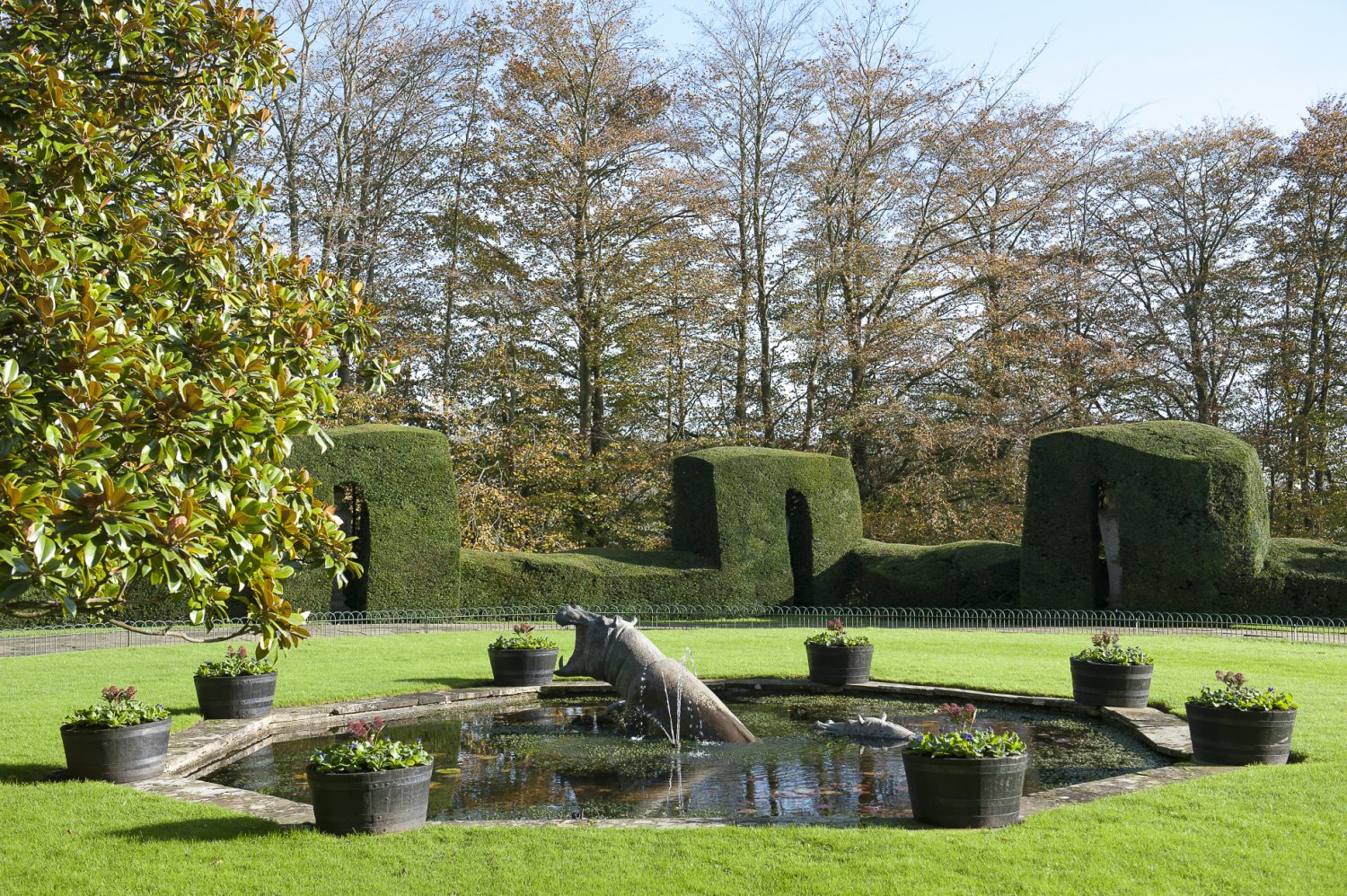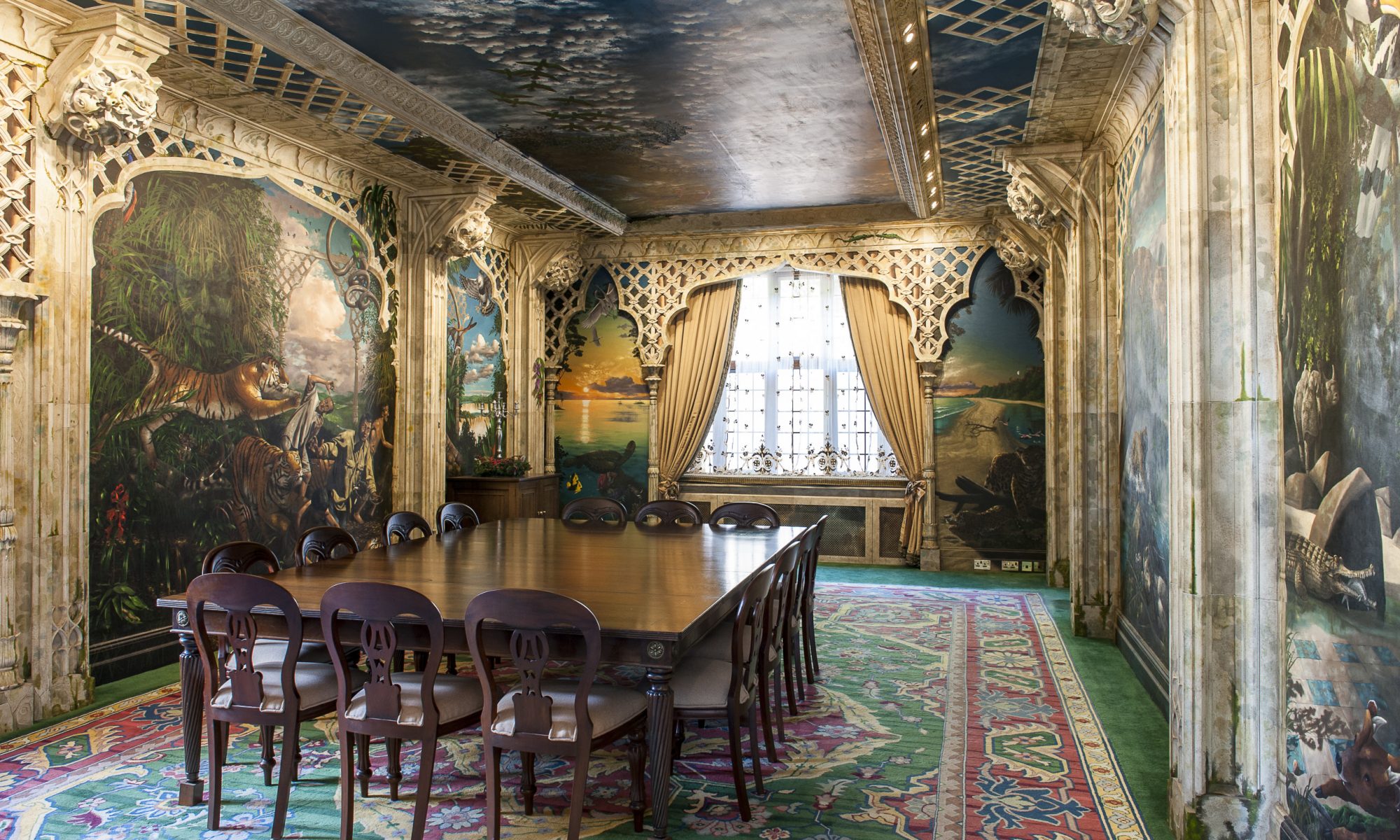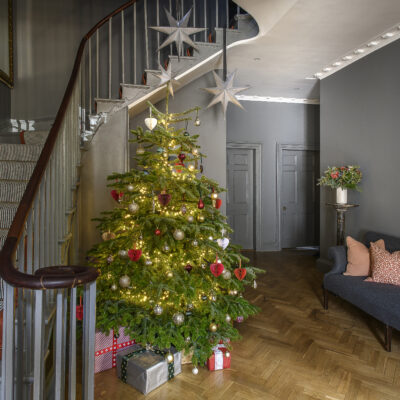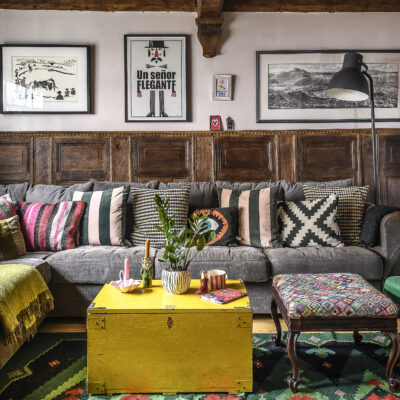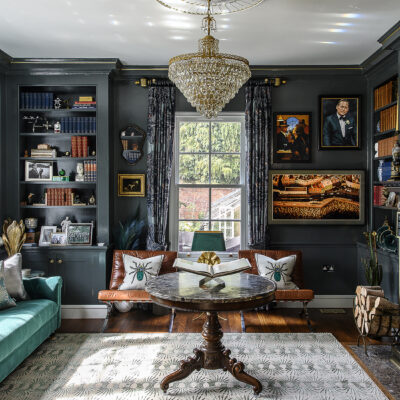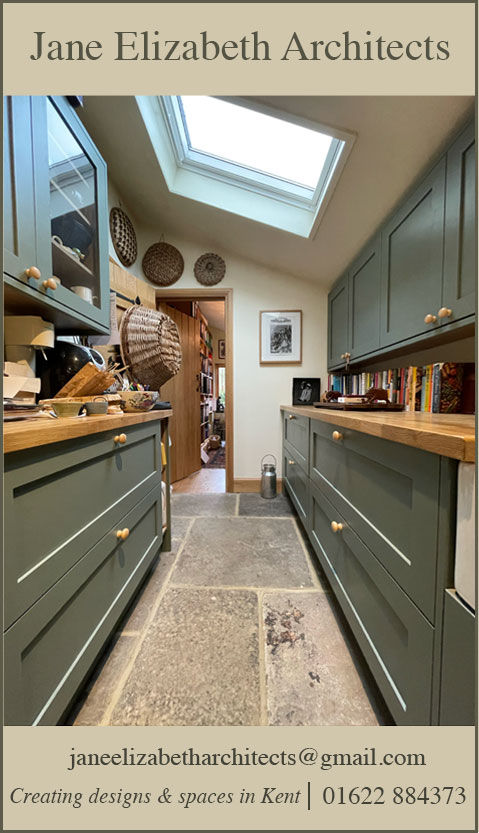When John Aspinall acquired Port Lympne in the 1970s, he rescued the impressive mansion from decades of neglect. Flanked by endangered species on all sides, this grand building opened as a hotel and wedding venue in 2014, and offers a remarkable opportunity for guests to enjoy a unique break, where it’s possible to meet some of the rarest animals in the world.
Mention Port Lympne today and the immediate association is with conservationist John Aspinall who established one of the country’s leading wildlife reserves there in the early 1970s. Fifty years earlier, however, the estate had a very different reputation and a very different owner.
Philip Sassoon was the product of two of Britain’s wealthiest families – the Sassoons and the Rothschilds. On the death of his father, Sir Edward Sassoon, he sold his parents’ home in Sandgate and set about building his own country house in an idyllic setting on a hill just west of Lympne with truly spectacular views down across the marshes to the sea.
Sassoon commissioned Sir Herbert Baker to design the house, Belclaire, in the Cape Dutch architecture style and the first stage was completed just in time for WWI. During the war, he served as private secretary to Field Marshal Haig but when peace came it was very much a case of ‘goodbye to all that’. Work on the house – now renamed Port Lympne – restarted under the direction of Philip Tilden whose job was to enlarge the property and to make it “no more of the modest week-end home, but rather the epitome of all things conducive to luxurious relaxation after the strenuousness of war”.
It was to be a challenge to the world, telling people that a new culture had risen up from the sick-bed of the old, with new aspirations, eyes upon a new aspect, mind turned to a new burst of imagination.
Completed, Sassoon found himself in possession of a “moderate” house of four reception rooms, two libraries, thirteen principal bedrooms, eight bathrooms and staff quarters comprising 17 bedrooms and five bathrooms. The décor – epitomized by his Ballets Russes-inspired dining room with its lapis lazuli walls, opalescent ceiling, gilt-winged chairs with jade-green cushions, and frieze of African tribesmen – was, shall we say, just a little on the flamboyant side. Diarist Henry Channon described it as “a triumph of beautiful bad taste and Babylonian luxury”.
Channon’s wife, Honor Guinness, was less complimentary about the ‘bachelor wing’ with its Moorish courtyard that Tilden had also thoughtfully added to accommodate young airmen from nearby Romney Marsh flying field. She said it looked like “a Spanish brothel”.
The Italian-style terraced gardens, cut out of the former sea cliffs, were also designed by Tilden, where again he indulged himself – twin swimming pools and monumentally classical garden staircase, a grand flight of steps crowned with temples. Sassoon thought highly enough of Tilden’s work inside and out to recommend him to Churchill to work on Chartwell in Kent. It was a recommendation endorsed by Lloyd George for whom Tilden had built a house at his newly acquired estate of Churt a few years earlier.
Not only a possessor of huge wealth, Sassoon was also a young man of considerable charm and intellect. His father had been MP for Hythe and his son ‘inherited’ his seat in the Commons where he served as Parliamentary Private Secretary to Lloyd George and Under Secretary for Air. He was also known as one of the greatest hosts in Britain and, throughout August, Port Lympne hummed with the good, great and the naughty with guests ranging from royalty in the shape of the Prince of Wales, Mrs Simpson, the Duke of York and Mountbatten to the great politicians of the day and a host of writers and artists. Even Charlie Chaplin made a guest appearance.
The family’s background in commerce and their religion, however, could attract the odd mindless comment from the twittering classes. Weekend guest Virgina Woolf described him as “an underbred Whitechapel Jew”. If he was aware of the remark he would, however, have shrugged it off. Perhaps better to be underbred, kind and generous than over-rated, malicious and a member of a group that was largely a cultural confidence trick. Critic F R Leavis was later to dismiss the leading lights of the Bloomsbury set as belonging not to the history of culture but the history of publicity.
Sadly, Sassoon died at only 50 in 1939 and Port Lympne fell silent. In 1942, it was commandeered by the RAF and an influx of Czech pilots set about destroying the place with an enthusiasm they might have reserved for the enemy. John Aspinall first saw the house in 1973. “I fell under its strange spell,” he said. “Here was a house, a park and a garden that had ‘died’ suddenly at the outbreak of war in 1939. For thirty-five years the estate had fallen into limbo. Since the end of the war no one had lived in the mansion and the once famous gardens which used to employ fourteen full-time gardeners were in the sole care of a part-time OAP.
“Fortunately about half of the interior of the house had survived the wartime influx of Czech pilots and the alterations of subsequent owners. We embarked on a 10 year programme to restore the house and gardens,” said Aspinall.
With the approval of English Heritage, the Grade II* listed mansion has been sympathetically restored into a four-star hotel to help raise funds for the conservation and preservation of wild animals which takes place within Port Lympne Reserve and its sister park, Howletts. The hotel opened in June 2014, offering four bedrooms and two suites named after the visitors to the mansion, those who created it and, of course, Sir Philip Sassoon. Its reception rooms are available for weddings and private events.
The first thing that strikes any visitor is Baker’s dramatic tiled hall and passageway, which runs the length of the ground floor from east to west and is decorated with patterned black and white marble in varying concentric curves beneath a barrel-vaulted ceiling. To one’s immediate right is the only room to have survived the Czech pilots and the ravages of time intact – the original dining room, the Tent Room.
The room was painted by Rex Whistler, one of the leading British artists of the day. Whistler decided to turn the barrel-vaulted room into a into a blue-and-white striped tent which would seem to have been put up between two doorcases of stone and be looked into by windows at the back. These would have real curtains of the same stripes, exactly matching the painted material stretched in wrinkled trompe l’oeil across the curved ceiling.
Overlooking the terrace that extends along the south side of the building is the Long Room, originally two rooms but now one impressive space. Two other reception rooms reflect Port Lympne’s new life as a conservation centre and are painted floor-to-ceiling in wildlife scenes by Arthur Spencer Roberts and Martin Jordan.
But perhaps the room that most evokes Sassoon’s time here is the fourth reception room, formerly the dining room, which ultimately became his bedroom. Long-gone is its lapis lazuli panel and gilt-winged chairs and a door leads out onto a lovely loggia where he would breakfast, the sea glittering in the distance.
Halfway along the marble passageway is the main staircase flanked by blue marble columns on the ground floor and pink marble columns above. Originally the mid-way landing would have led out onto the Moorish courtyard so admired by Honor Guinness. Unfortunately time has not been kind to the bachelor quarters and they are closed while plans for their renovation are finalized.
Upstairs are the bedrooms. Renovated as faithfully as possible are two bridal suites complete with four-posters – the Sir Philip Sassoon and Charlie Chaplin suites – and the Rex Whistler, Herbert Baker, Sir Winston Churchill and T E Lawrence rooms.
Outside the gardens have been restored to virtually their former glory. When Aspinall took over the mansion, he began a ten-year renovation project – the great border which is 135 yards in all was dug over twice by hand, piled with 200 tons of elephant dung, redesigned and replanted with 2,500 herbs and shrubs following the advice from Russell Page. The water used for the gardens comes from natural springs and a unique hydraulic ram system pumps it 300 feet up to a storage reservoir. The three rams work in concert, driven entirely by water pressure.
So how would Sassoon, now no doubt reclining above on a jade-green cloud, view the 21st century reincarnation of Port Lympne? Well, he could not but approve of the bold treatment of the two wildlife rooms, would be pleased that the Czechs checked out before they could trash the Tent Room and delighted that although the lapis lazuli of the former dining room had vanished, African tribesmen still frolic along their frieze now accompanied to the distant roar of lions in the night.
Port Lympne’s well-deserved popularity as a wedding venue might bring a wry smile to the lips of this life-long bachelor but what would have given him untold pleasure would be the sound of laughter once again ringing through rooms that had previously lain silent for so long.
In the Martin Jordan meeting room floor-to-ceiling murals depict scenes of endangered wildlife. Subtly painted to be disguised within foliage, and only visible from certain angles, the face of John Aspinall looms above a tiger defending her young from poachers – a poignant reminder of the plight of some of the world’s most vulnerable species and how they must be protected
The dramatic tiled hall and passageway, which runs the length of the ground floor from east to west and is decorated with patterned black and white marble in varying concentric curves beneath a barrel-vaulted ceiling
“I fell under its strange spell. Here was a house, a park and a garden that had ‘died’ suddenly at the outbreak of war in 1939. For thirty-five years the estate had fallen into limbo. We embarked on a 10 year programme to restore the house and gardens...” John Aspinall
The vibrant Spencer Roberts room is adorned with images of animals in their natural habitats – from birds and reptiles to monkeys and bears
A pair of soft leather-covered doors opens to reveal the Spencer Roberts room, where many of Port Lympne’s wedding receptions take place
The long central corridor has far-reaching views through the glass doors and along a boulevard of trees that leads to the animal enclosures
Just to the right of the main entrance, the Rex Whistler room – also known as the ‘Tent Room’ – features walls beautifully painted by Rex Whistler himself
The artist decided to turn the barrel-vaulted room into a blue-and-white striped tent which would seem to have been put up to connect two separate parts of the mansion
The main staircase is flanked by blue marble columns on the ground floor and pink marble columns above. Originally the mid-way landing would have led out onto the Moorish courtyard so admired by Honor Guinness. Unfortunately time has not been kind to the bachelor quarters and they are closed while plans for their renovation are finalized
Each room has been named after the original architects, famous guests and, of course, Sir Philip Sassoon
The bedrooms benefit from stunning views across the extensive gardens and out towards the sea
Philip Tilden created Italian-style terraced gardens, cut out of the former sea cliffs
He also included twin swimming pools, a monumentally classical garden staircase and a grand flight of steps crowned with temples
Sassoon thought highly enough of Tilden’s work inside and out to recommend him to Churchill to work on Chartwell in Kent
The water used to quench the considerable thirst of the magnificent gardens comes from natural springs and a unique hydraulic ram system pumps it 300 feet up to a storage reservoir
